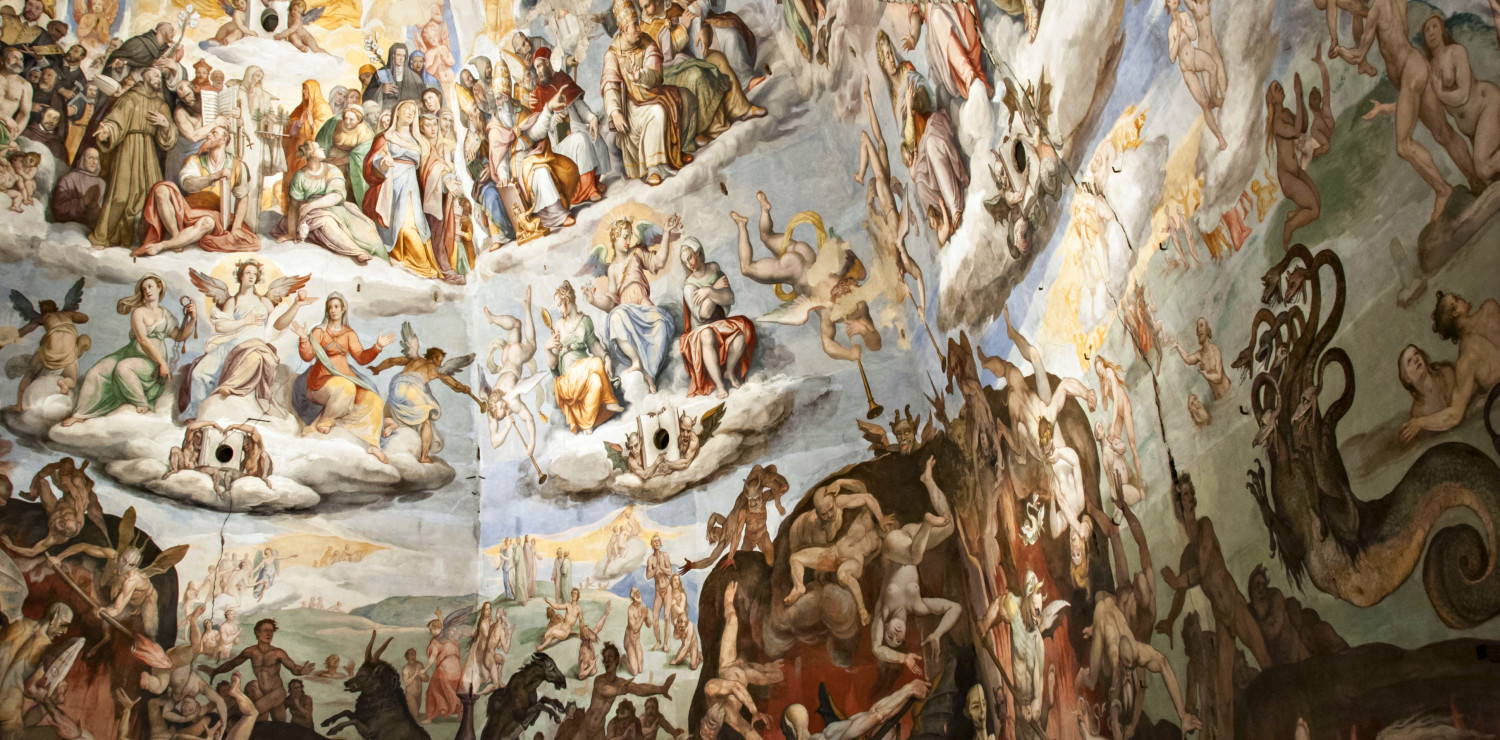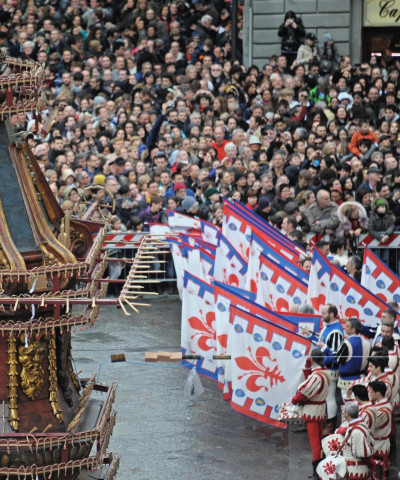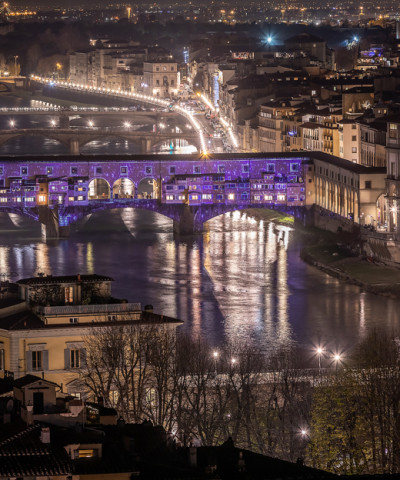Everything you need to know about the Duomo of Florence
From the dome to the frescoes, the jewels of the Cathedral of Santa Maria del Fiore
Its dome has for centuries been a symbol of the genius of Florentine architecture in the world, of the intelligence of the Italian Renaissance, of the beauty generated by harmony; its nineteenth-century polychrome marbles enliven a facade tuned with balance to the splendid bell tower that had Giotto di Bondone among its makers.
Discover our video on Brunelleschi's Dome here, and all the secrets and stories of one of Florence's symbols here.
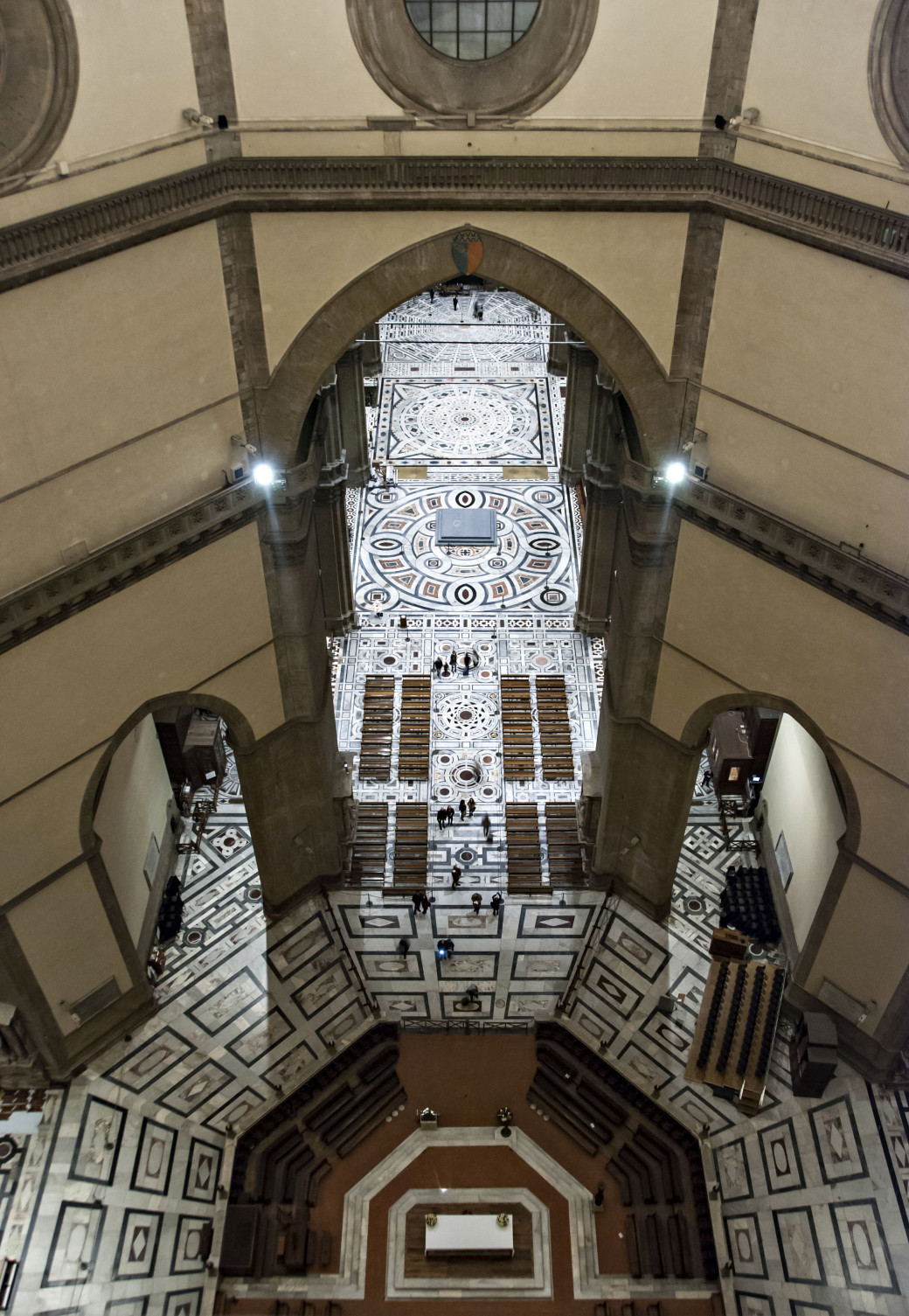 The interior of the Duomo of Florence
The interior of the Duomo of Florence"Many people are bewildered by the sobriety of the interior," Monsignor Timothy Verdon, director of the Opera di Santa Maria del Fiore and for a few hours an exceptional guide through the cathedral complex, explains, "until they raise their eyes to the marvel that is Brunelleschi's dome with its frescoes, which lead us from Hell to Heaven.
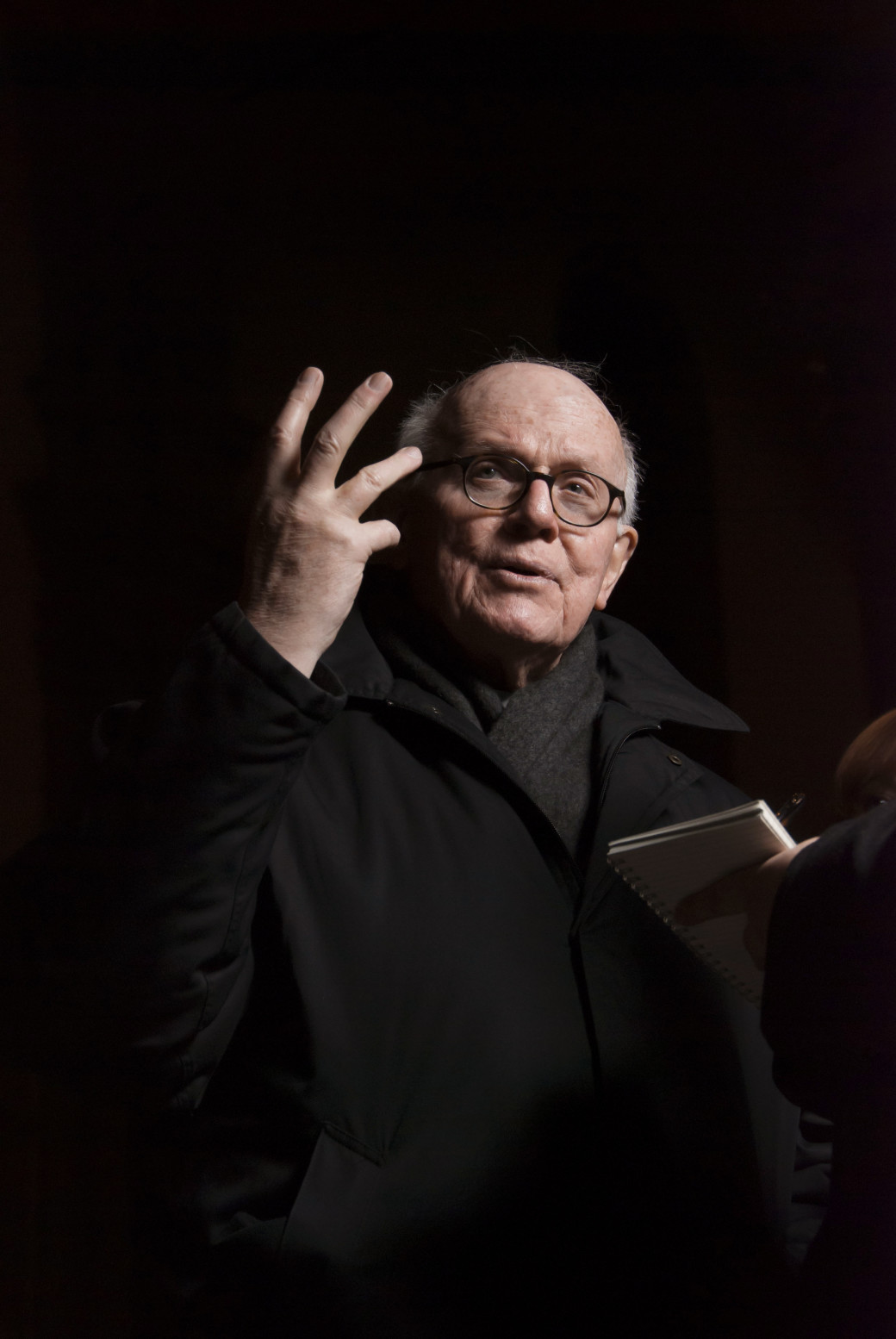 A portrait of Timothy Verdon, director of the Opera of Santa Maria del Fiore
A portrait of Timothy Verdon, director of the Opera of Santa Maria del FioreOne of the many narratives that animate the art of this city, beginning with the almost thousand-year-old Baptistery with its three doors unique in the history of world art.
Find out everything you don't know about the Florence Baptistery here!
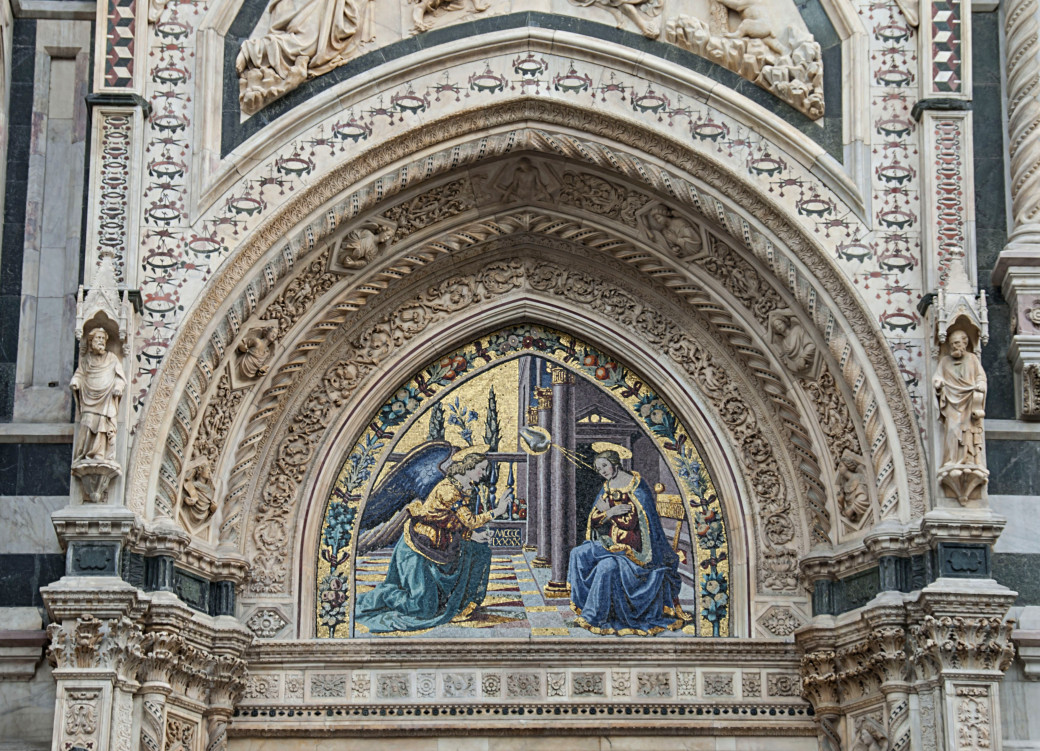 A detail at the entrance of the Cathedral
A detail at the entrance of the Cathedral Their decoration was the prerogative of the Arte di Calimala, which contrasted with the Arte della Lana, which instead took on the task of decorating the façade of the Duomo, which was later dismantled under Francis I, although it was to Arnolfo di Cambio's design. Now it is possible to see these two facades reconstructed together in the Museo dell'Opera del Duomo."
Here is our tour of the Museo dell'Opera del Duomo, and here is the tour in the Bottega dell'Opera del Duomo.
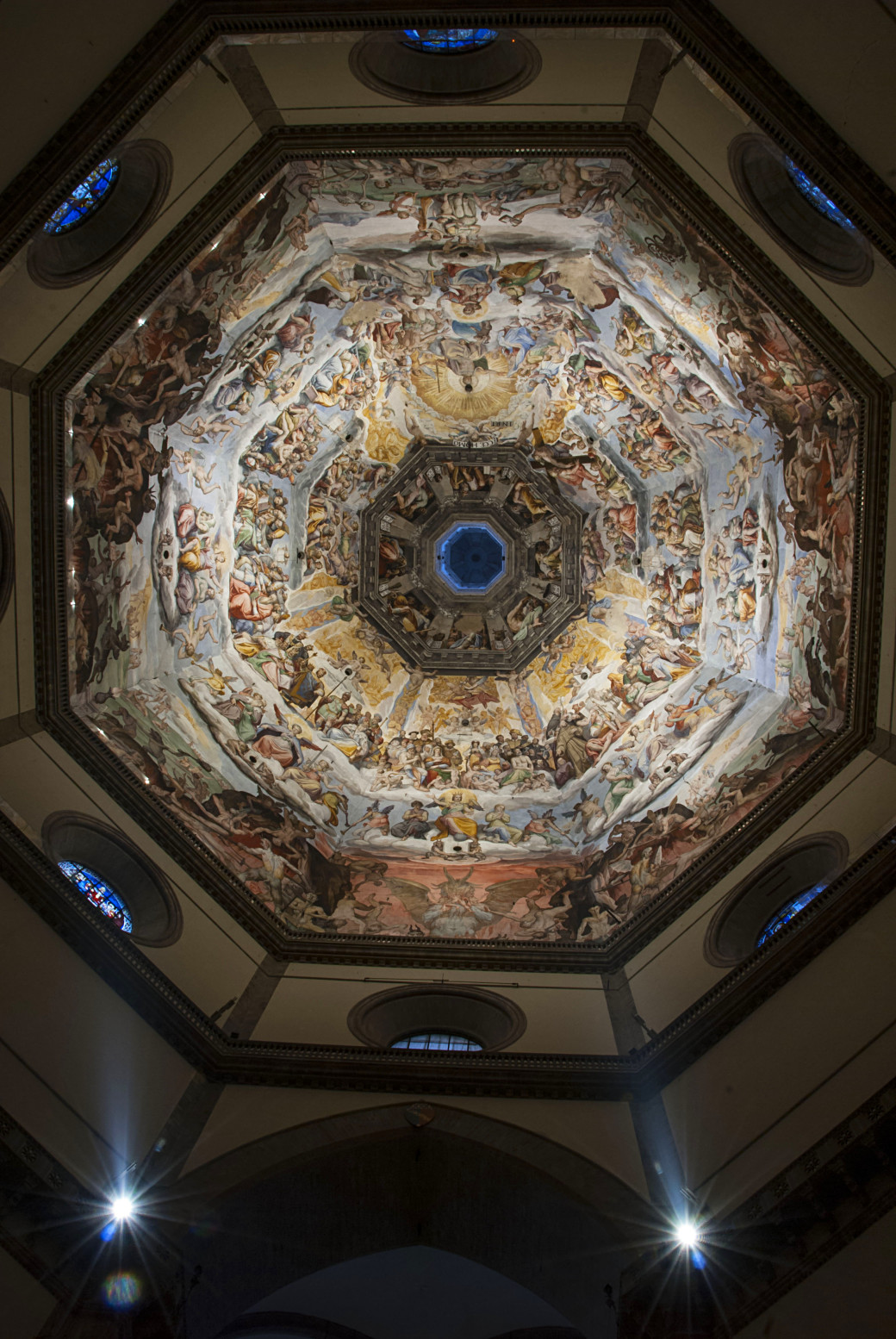 The Dome of Santa Maria del Fiore, a pictorial cycle of over 3,600 square meters executed by two of the most famous artists of the late sixteenth century: Giorgio Vasari and Federico Zuccari
The Dome of Santa Maria del Fiore, a pictorial cycle of over 3,600 square meters executed by two of the most famous artists of the late sixteenth century: Giorgio Vasari and Federico ZuccariCompetition has always been, and not only in art, one of Florence's distinguishing features, and it can also be recognized in the two frescoes dedicated to condottieri-executed by Paolo Uccello and Andrea del Castagno-"the second of which, dated 1456 and dedicated to Niccolò da Tolentino, seems to want to surpass the first, which portrays John Ackwood, despite the fact that they were executed 20 years apart... ", explains Canon Verdon, who from first New Jersey and then Yale came as a student almost 50 years ago to Italy, first to Venice and then to Florence, where he settled.
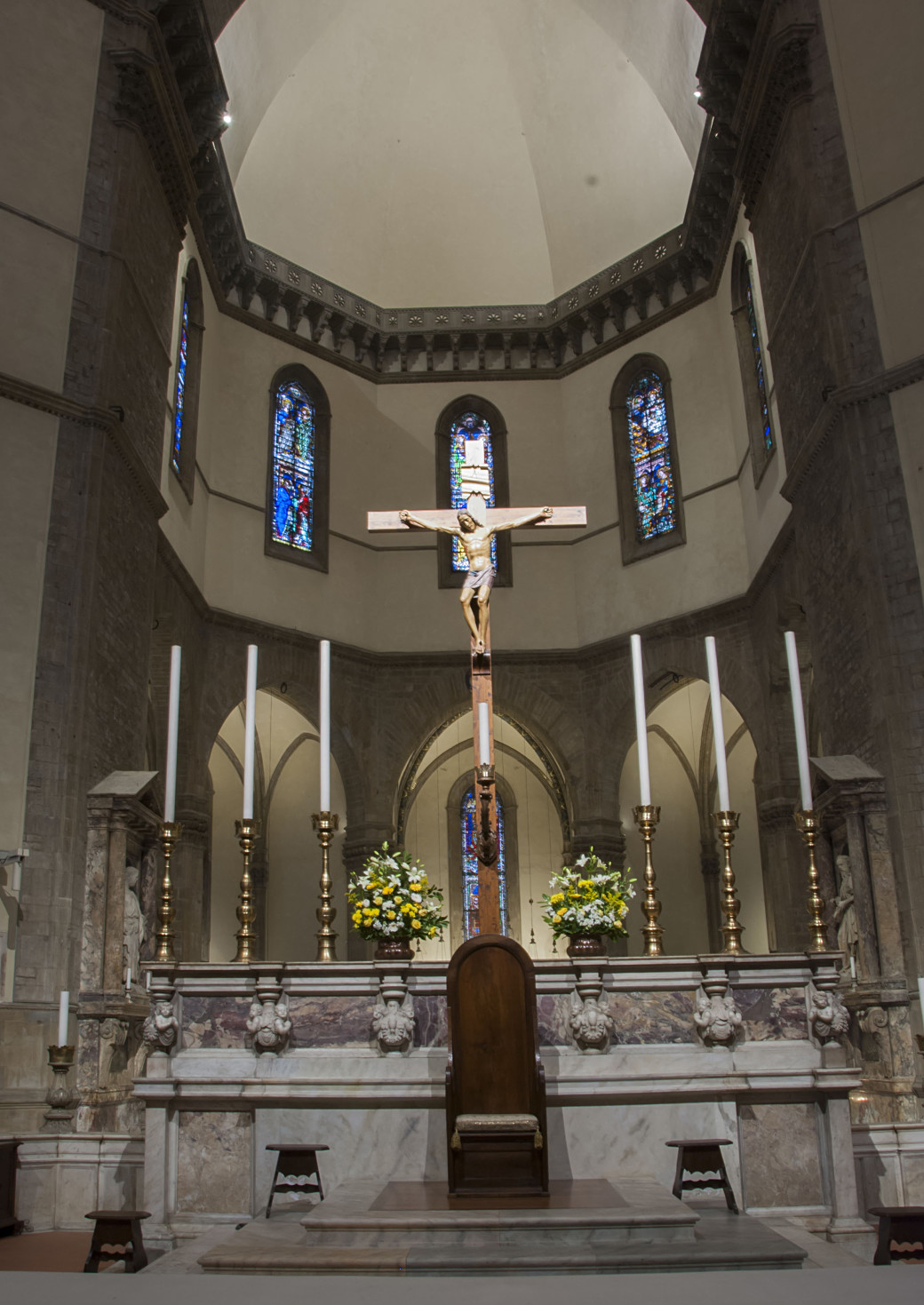 A view of the apse and the “eyes” of the tambour in cupola
A view of the apse and the “eyes” of the tambour in cupolaOne of the wonders that may not immediately be appreciated in the large structure is the richly decorated marble floor "was desired by the Medici who finally became Grand Dukes of Tuscany," says the Monsignor, "who were able in this way to overcome the effect that the cathedral no longer looked simply like a large indoor market.
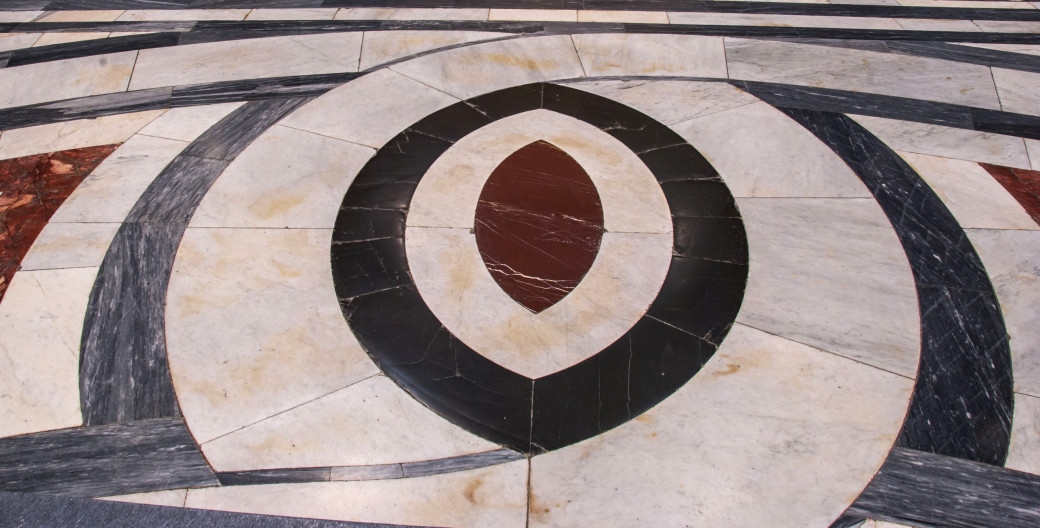 The marble floor of the Cathedral of Florence
The marble floor of the Cathedral of Florence The original floor was in fact made of terracotta, exactly like the city streets that we see today instead in the gray stone wanted by the Lorraines, and it gave a feeling of low light... in this way, instead, the lords of Florence moved on a marble stage of wealth and elegance, a setting of power that was fully defined when the Grand Duke assided after entering the cathedral in his place before the Bishop during the great solemnities, surrounded by hundreds of candles arranged in candelabra set on the colonnade around the central apse. It seems that Cosimo I used to say that it was only in those moments that he really felt like Grand Duke of Tuscany."
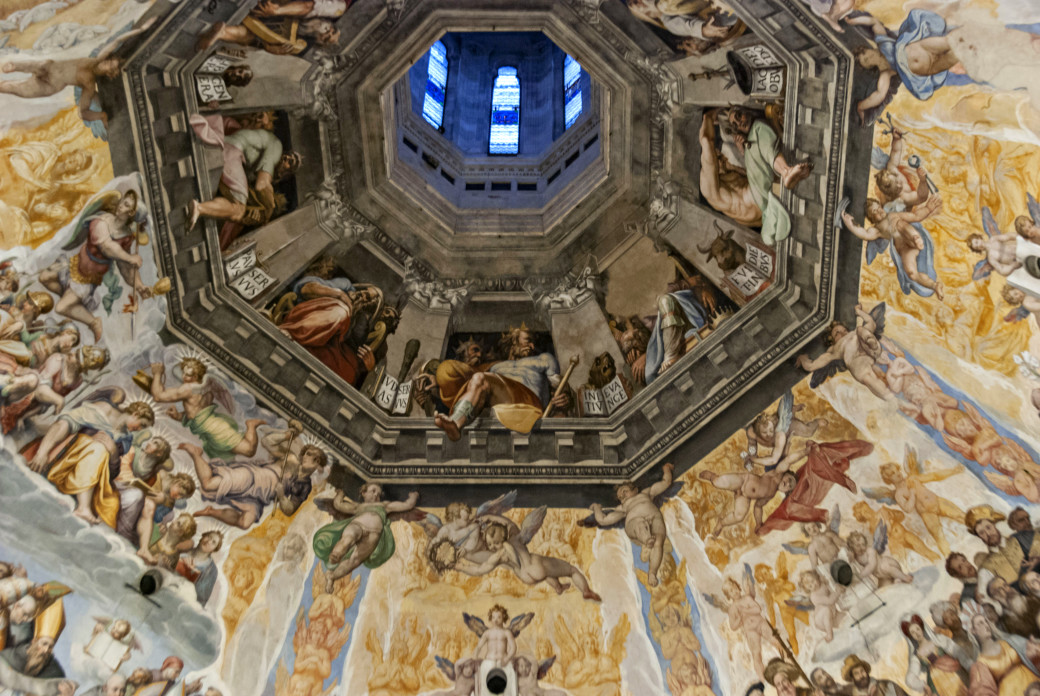 Lucifer by Federico Zuccari, 13 Florentine arms tall (8 feet) surmounted by the heavenly glory
Lucifer by Federico Zuccari, 13 Florentine arms tall (8 feet) surmounted by the heavenly gloryAnd for sure he must have felt Grand Duke when he looked up at the dome, despite the fact that it was not yet frescoed. Florence, in fact, according to those who had little faith in the builders and architects of the time had for a long time at its disposal "the biggest hole in the world," since after 1380 it was clear what the size of the dome was to be (i.e., that of the Pantheon in Rome) but once the structure was in place, for several years, there was no covering.
Fino a quando, come racconta il Vasari nella sua Vita di Brunelleschi, che aveva trascorsi a Roma diversi anni, “Pippo, come veniva chiamato l’architetto per la sua altezza contenuta, non convinse le maestranze e i governanti cittadini con lo stratagemma dell’uovo che sarebbe riuscito a costruire la cupola del Duomo - aggiunge il religioso, che per la Diocesi di Firenze è il responsabile per l’Arte sacra e i Beni ecclesiastici -.
L’esito è quello che possiamo visitare ancora oggi: due cupole titaniche l’una interna all’altra, con un passaggio tra queste che consente di percorrerla, senza utilizzare quel cemento armato che i Romani avevano scoperto ma che il Medioevo aveva perduto… L’esito furono 12 archi gotici rafforzati da 8 catene. Il tutto costruito senza ponteggi, il che fece gridare i Fiorentini e i viaggiatori al miracolo.”
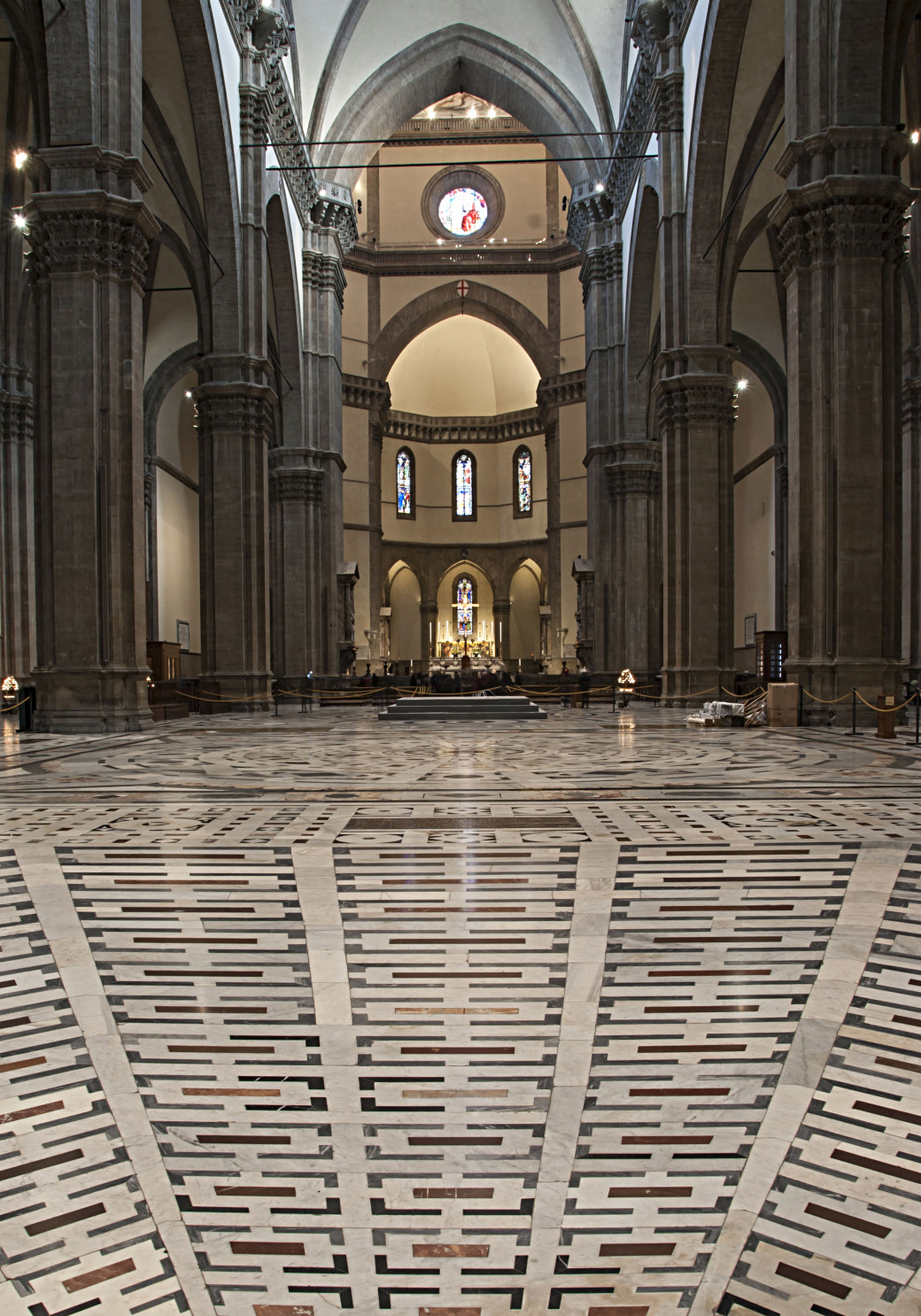 The order of the columns inside the Cathedral of Florence
The order of the columns inside the Cathedral of FlorenceUntil, as Vasari recounts in his Life of Brunelleschi, who had spent several years in Rome, "Pippo, as the architect was called because of his contained height, convinced the workers and the city rulers with the stratagem of the egg that he would succeed in building the dome of the cathedral," adds the clergyman, who for the Diocese of Florence is the person responsible for Sacred Art and Ecclesiastical Heritage.
The outcome is what we can still visit today: two titanic domes inside each other, with a passage between them that allows you to walk through it, without using that reinforced concrete that the Romans had discovered but that the Middle Ages had lost... The outcome was 12 Gothic arches reinforced by 8 chains. All built without scaffolding, which made the Florentines and travelers cry out for a miracle."
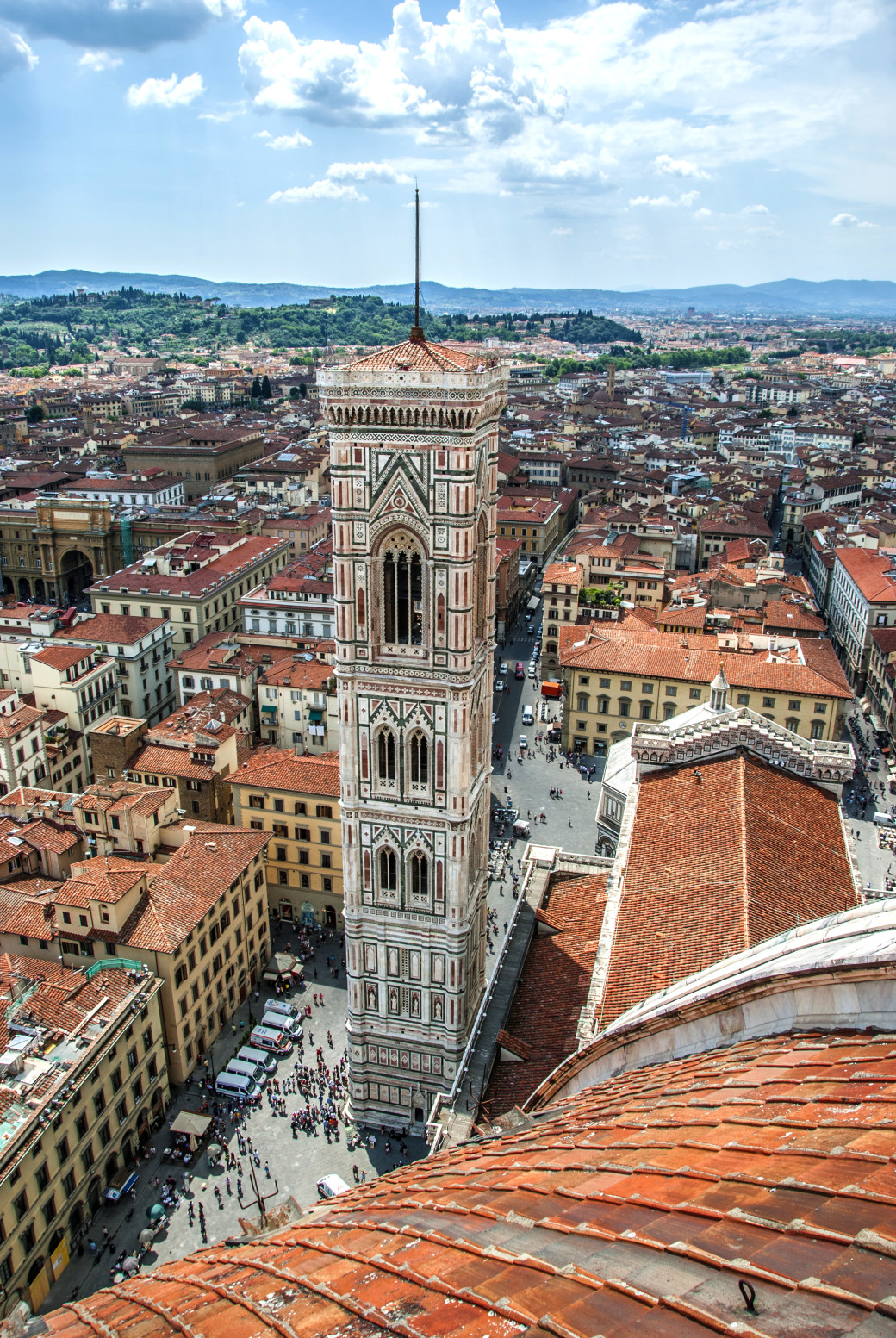 Vista dalla Cupola
Vista dalla Cupola The consecration of the entire cathedral dates back to 1436, and it was then that the Curia realized that the church lacked a 'choir'; for this it issued a call for tenders, to which Brunelleschi was also invited to participate, whose project was, however, rejected... -concludes Monsignor Verdon with a smile, reiterating the spirit of contradiction of the Florentines of all times- After all, even today, despite the beauty and value of the complex in Piazza Duomo we had to wait decades before the Municipality was able to appreciate its value and protect it from traffic... if this is not contradiction of the fortune of such a heritage this..."






